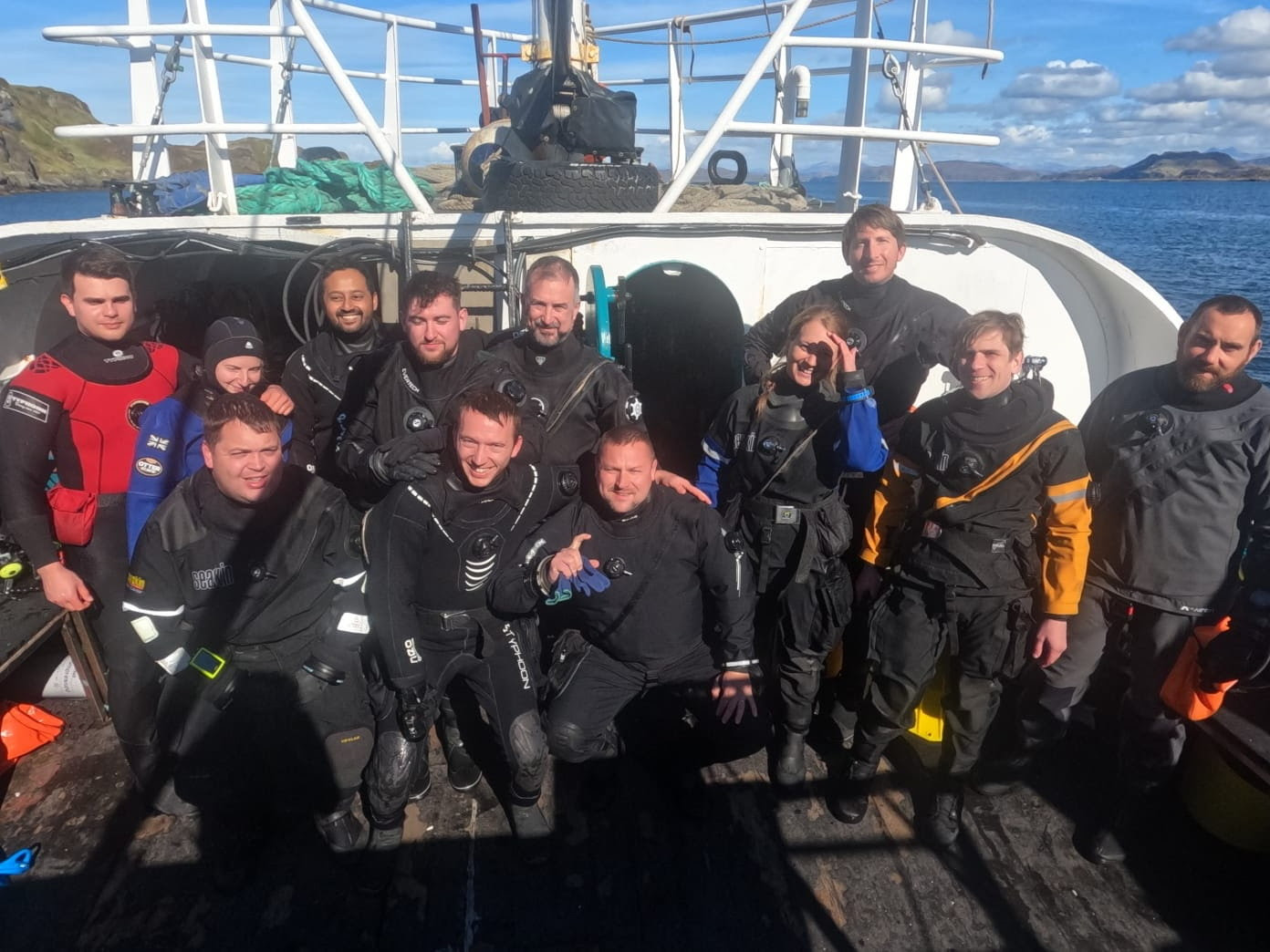Sound of Mull - 21-26 September 2024
Liveaboard on the MV Honeydew
Report by Sham Aluwihare
I hope you’ll enjoy reading about the 5-day liveaboard organised by Deep Blue Scuba that I joined last month on the MV Honeydew. The trip included a series of thrilling dives to several renowned shipwrecks and stunning wall dives along the rugged coastline of the Sound. The journey featured wrecks such as: the Breda, Hispania, Aurania, Tapti, Rondo, and SS Meldon, as well as two natural dive sites, Lismore Wall and Insh Wall.
Day 1: Arrival
Leaving behind the dreich weather of Edinburgh, team Deep Blue Scuba (DBS) arrived in sunny Dunstaffnage on Saturday (21st June). Once assembled, we wasted no time in organising and loading up 5 days’ worth of dive gear. After boarding the MV Honeydew , we were briefed by Sarah and Rohan on the vessel’s facilities, safety measures, and our dive itinerary. The Honeydew provides comfortable accommodations with ample room for dive gear, a well-equipped dive deck, and communal spaces for relaxation. Taking advantage of the warm evening, we had dinner on the dive deck. A veritable feast whipped up by Sarah, which set the culinary standard for the next few days. This was followed by some time in the lounge relaxing and planning the dives for day 2.
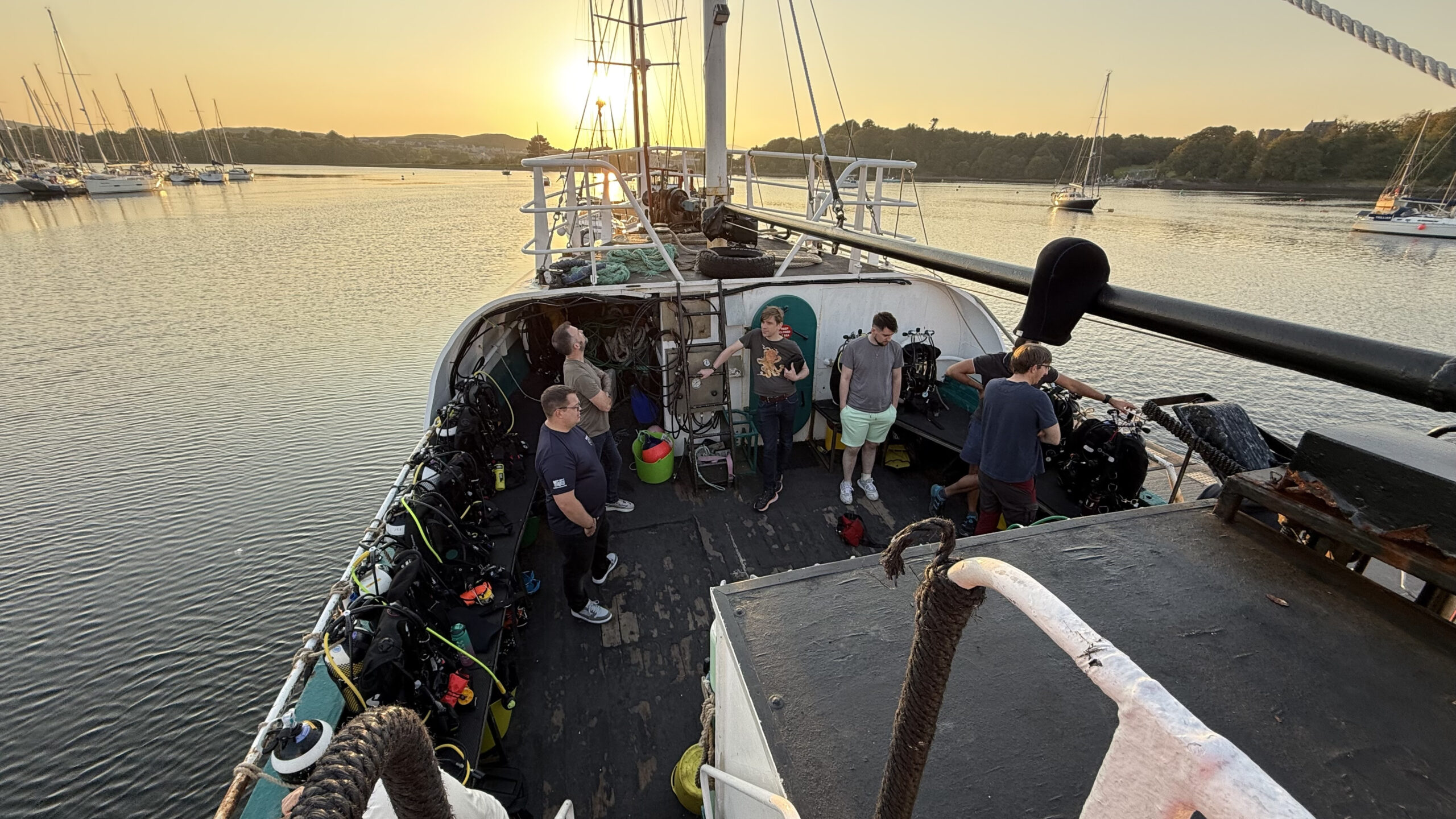
Day 2: Settling into the expedition
Dive 1: SS Breda
Our first dive was on the wreck of the SS Breda, one of Scotland’s most famous wrecks. The Breda was a Dutch cargo ship that sank in 1940 after being bombed by German aircraft. Lying at a depth of around 20-30 metres, the wreck is mostly intact, providing excellent opportunities for exploration. We had a good view of the cargo hold, propeller, and various marine life that has colonized the wreck. The visibility was on the poorer side but was no issue. We encountered schools of pollock, crabs, and anemones clinging to the structure. Of note were the large Conger eels sheltering in the wreck.
Dive 2: Hispania
Our second dive was on the Hispania, another iconic wreck in the Sound of Mull. The Hispania sank in 1954 and sits upright in about 15-20 metres of water. It is remarkably intact, with its structure covered in marine life, including vibrant sea anemones, sponges, and fish species. The wreck’s open passages allowed us to swim through sections of the ship, experiencing a sense of discovery as we explored the bridge, hull, and deck fittings. Visibility wasn’t improved from dive 1 but this didn’t diminish anyone’s enthusiasm.
An evening out in Tobermory
After two dives, we spent the evening anchored in Tobermory, discussing the day’s experiences over a hearty meal prepared by the crew. We then trekked over to Rubha nan Gall Lighthouse about a mile outside the harbour with an obligatory pitstop at the local pub.
Day 3: Exploring Historic Wrecks and Scenic Walls
Dive 3: Aurania
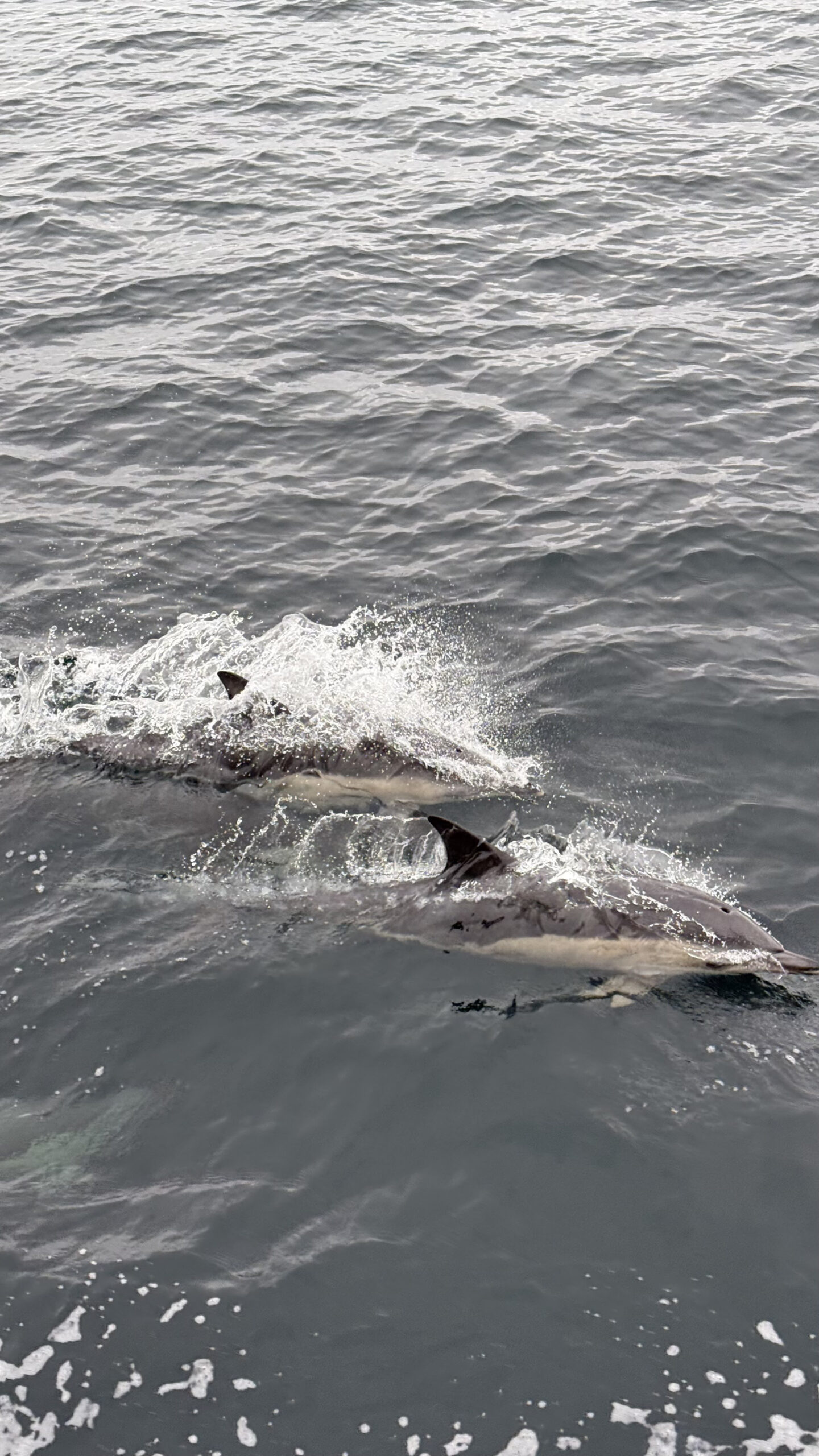 Our first dive of the day was on the Aurania, a large passenger liner that sank after falling prey to the lurking German U boat UB-67.
Our first dive of the day was on the Aurania, a large passenger liner that sank after falling prey to the lurking German U boat UB-67.
The wreck lies in deeper water, with the structure spread across the seabed. The Aurania is not as intact as some other wrecks, but it offered fascinating relics of its past, including the signature boilers reaching a height of up to 7 metres. There was plenty of marine life dotted around the wreck and we had good visibility.
Whilst on our surface interval we were pleasantly surprised to have a pod of dolphins swim up to and alongside the Honeydew for a fair while. An unexpected bonus!
Dive 4: Tapti
This turned out to be the highlight of our dive trip. Day three began with a dive on the wreck of the Tapti, a steamship that lies at a depth of 10-15 metres. Though heavily damaged, the wreck is home to a thriving marine ecosystem.Visibility was excellent at up to 20 metres and well-lit owing to the shallow depth. It was home to plethora of marine life, such as cod, squat lobsters, and the occasional octopus hiding in the wreckage. Her impressive bow is largely intact and is home to masses of colourful sea life.
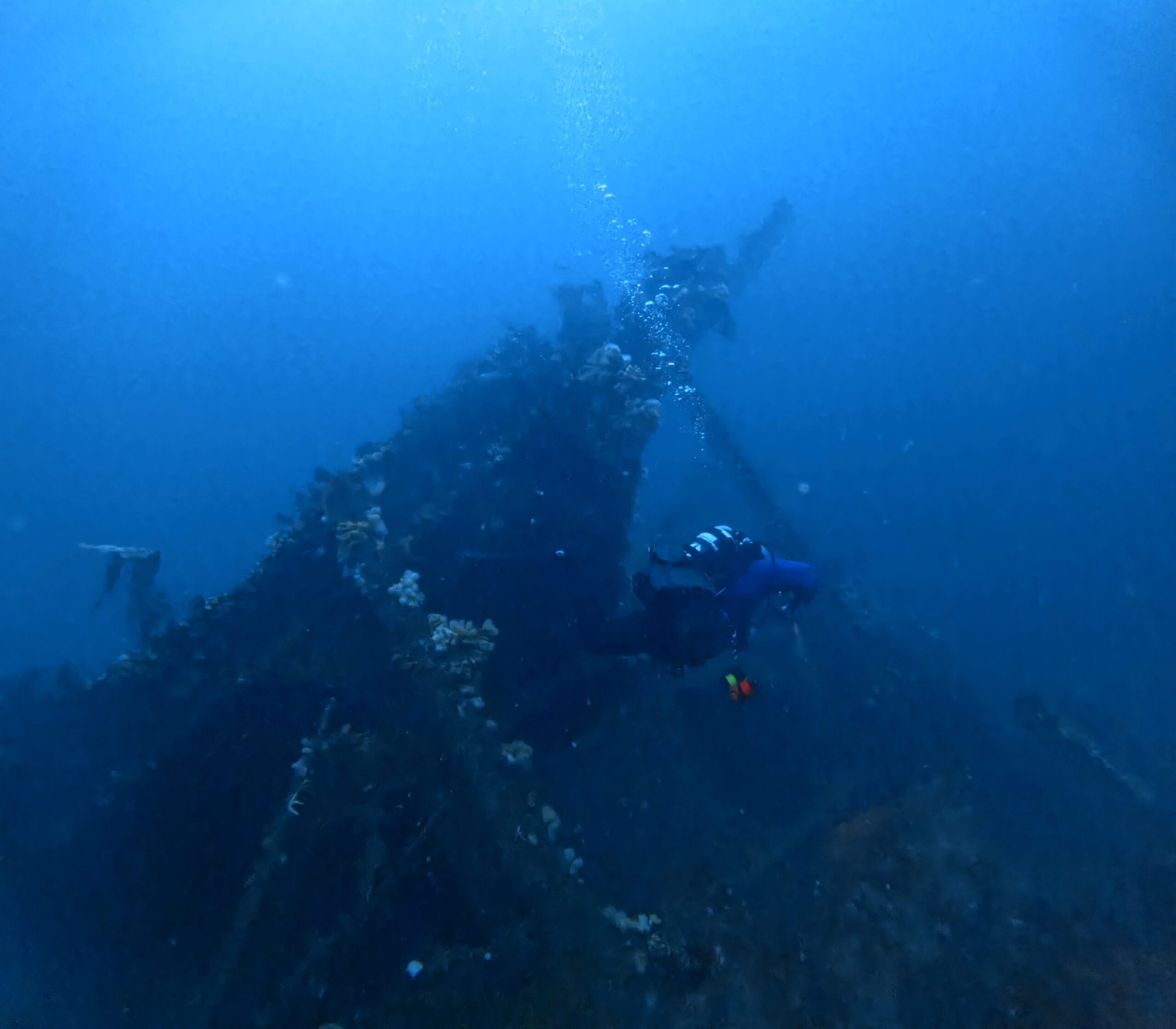
The day ended back at Tobermory, where we had plenty of discussion on the days diving, particularly the Tapti.
This was followed by another excellent evening meal after which the team spread out among the communal areas and even outside on deck enjoying the peacefulness of the Sound of Mull.
Day 4: Challenging and Rewarding Wreck Dives
Dive 5: Rondo
Our first dive of the day was on the Rondo, one of the more unusual wrecks in the Sound of Mull. The Rondo, a cargo steamer, lies at a steep angle on a slope, with the bow in shallow water (around 8 meters) and the stern reaching depths of 50 metres. This provided a unique experience of diving along the length of the ship, starting deep and ascending into shallower water. The current on the wreck was particularly strong, so the descent itself was quite challenging. The sight of the wreck cascading down the slope was dramatic, and we explored different parts of the ship, from the deck to the rudder, now encrusted with marine life. The challenge of navigating the depth changes made this dive particularly exciting.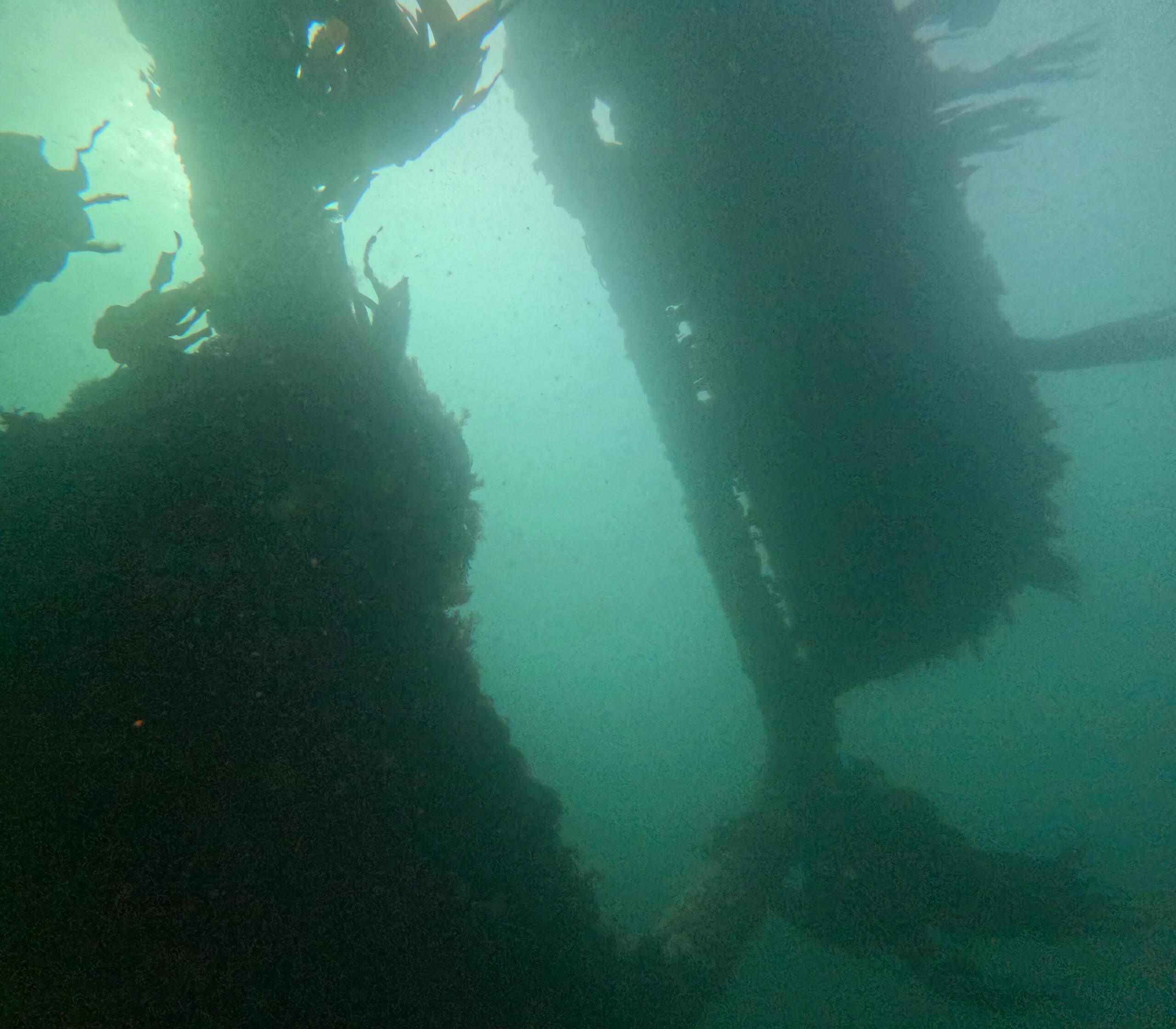
Dive 6: Lismore Wall
The second dive of the day took us to Lismore Wall, a beautiful natural dive site located near the island of Lismore. The wall features dramatic vertical drop-offs covered in vibrant marine life. Descending to about 25 metres, we were treated to views of soft corals, sponges, and schools of fish darting in and out of crevices. The wall is home to species such as lobster, scallops, and dogfish. The clear water and stunning underwater topography made this dive particularly memorable.
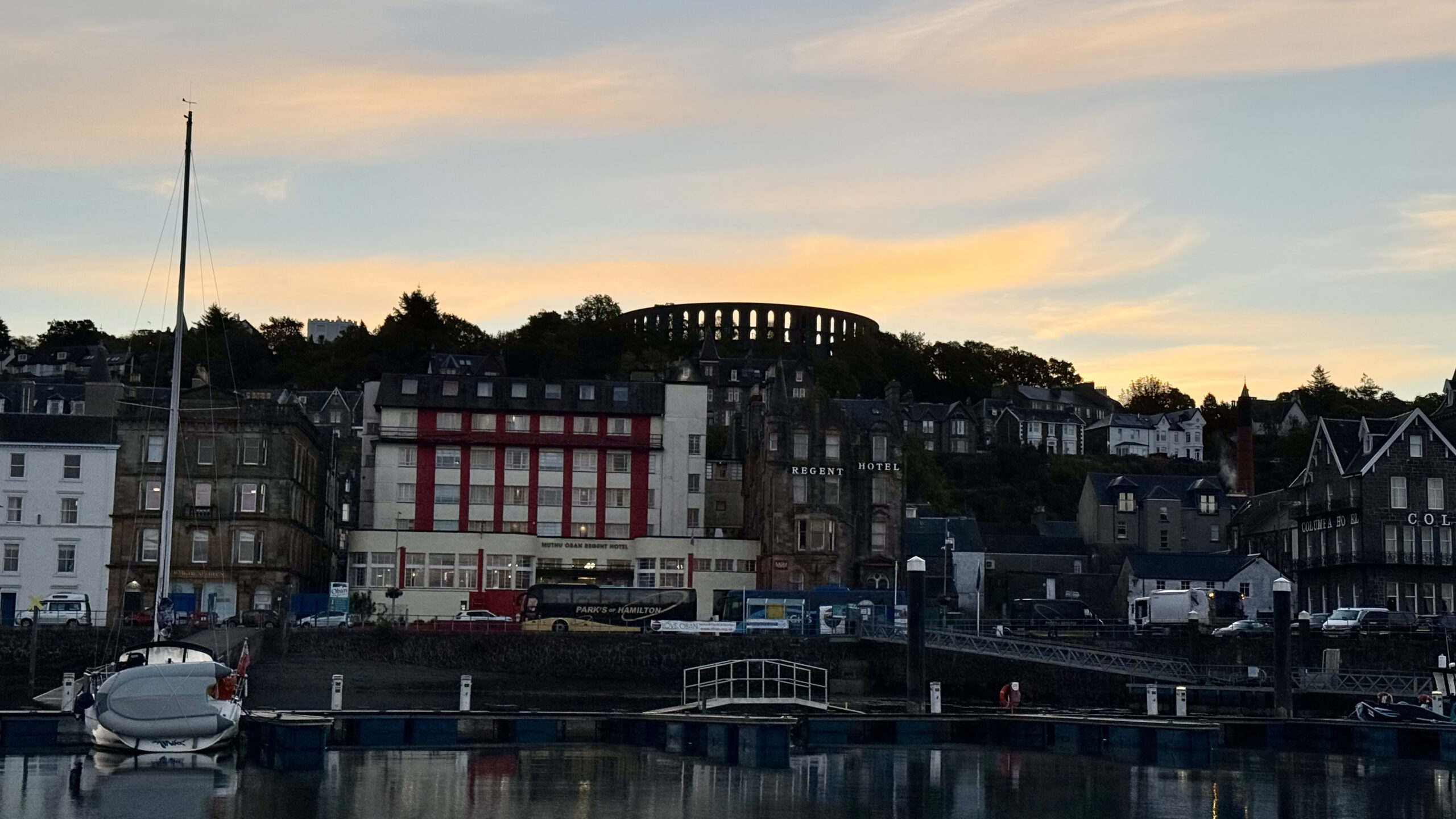 Our last night aboard the Honeydew was spent in picturesque port of Oban. This afforded plenty of access to shops and pubs and the team eventually converged on a seafront establishment. This was followed, in the typical fashion, by another stellar meal back onboard the Honeydew.
Our last night aboard the Honeydew was spent in picturesque port of Oban. This afforded plenty of access to shops and pubs and the team eventually converged on a seafront establishment. This was followed, in the typical fashion, by another stellar meal back onboard the Honeydew.
Day 5: Final Wreck and Wall Dives
Dive 7: SS Meldon
On the last day of the trip, we dove the wreck of the SS Meldon, a coal ship that sank in 1917. The wreck lies in shallow water (15 meters) meters and has a scattered, broken structure. The highlight of this dive was the large number of artifacts still visible on the seabed, such as parts of the ship’s boilers and machinery.
The large rudder and propeller were particularly impressive. The wreck is also hometo many species of fish, including wrasse, and we saw large clusters of starfish and sea urchins along the debris field.
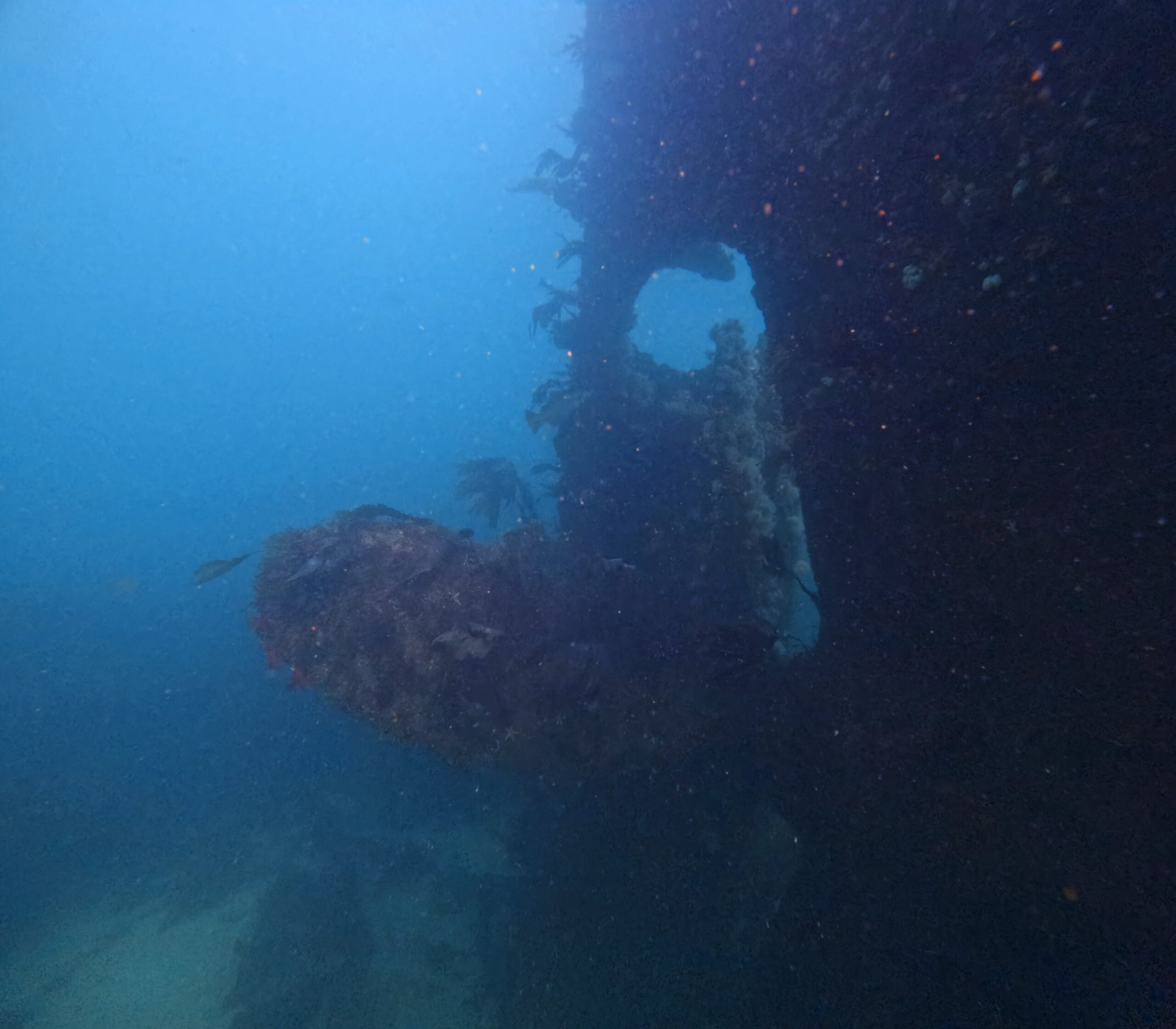
Dive 8: Insh Wall
Our final dive was at Insh Wall, a sheer underwater cliff that drops into the deep. The wall is covered in a dazzling array of marine life, with colorful sponges, sea stars, and the occasional nudibranch spotted on the wall. The dive depth ranged from 10 to 30 metres, allowing divers to explore the intricate life forms at different levels. This dive was a fitting end to the trip, as it showcased the unspoiled beauty of Scotland’s underwater world.
Conclusion
The 5-day live-aboard trip on the MV Honeydew in the Sound of Mull provided a perfect balance of challenging wreck dives and serene natural wall dives. Each wreck offered a unique glimpse into the region’s maritime history, while the wall dives highlighted the stunning biodiversity of Scotland’s coastal waters. The Honeydew crew were professional, ensuring safety and comfort throughout the journey, and the dive sites exceeded expectations in both historical interest and underwater beauty.
The trip made a lasting impression on everyone, with great experiences and new connections.
Sham Aluwihare
DBS Divemaster
